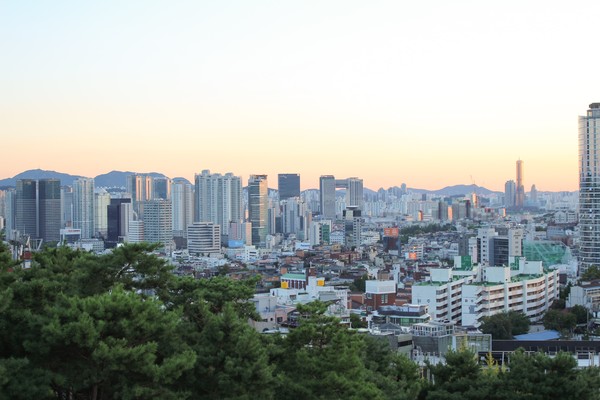Accommodating an expanding capital city
FOR CENTURIES, Seoul has served as the capital of Korea, as a city with a rich history and legacy. As more people flock to the city and living environments evolve, the need to renovate decades-old apartments has increased. Residents aspire to elevate and expand their residential environments, but these yearnings frequently encounter barriers due to infrastructure height restrictions. In light of the Seoul Metropolitan Government’s recent revisions to building height limits, it is crucial to harmonize a desire to preserve historical landscapes with the contemporary infrastructural needs of Seoul’s advancing urban lifestyle.

Height restrictions on residential infrastructure
Height restrictions have been established to protect areas that include cultural heritage or national security infrastructure. According to Kim Kab-sung (Prof., Dept. of Urban Planning & Engin.), a building’s height is determined by height restrictions, which are usually categorized into minimum height limitations and maximum height limitations. The former establishes a threshold for the lowest permissible height, whereas the latter imposes restrictions on the maximum allowable height for structures. The Seoul Metropolitan Government initially implemented building height limits in 1972 in the district surrounding Namsan Fortress Road. Today there are eight managed areas where the limits are in place, including Bukhan Mountain and Gyeongbokgung Palace. Each height restriction served a protective purpose, such as preserving the surrounding natural landscape that existed when first implemented. Yet as time passed, problems started to arise and the need for mitigation increased[1].
The relaxation of height restrictions is demanded
The goal of the revised plan is not to abolish all building height limits in Seoul. Rather, the plan’s objective is to transition towards more pragmatic management, given that the existing regulations are out of date and rigid. In many regions in Seoul, essential renovations have not been attempted due to constraints imposed by previous restrictions mandating low construction heights. Consequently, residents have been residing in aging neighborhoods that have remained severely underdeveloped. Residential developments, to comply with restrictions and fit more residences on limited sites, have had to be built densely, decreasing the quality of the livability of the residents. The government’s building height limits must consider Seoul’s expanding population and the imperative for sustainable infrastructure capable of accommodating and sustaining this growth. Easing these restrictions will greatly increase the capacity for development and renovation.
Unclear targets of landscape protection
The objectives of the existing regulations for preserving the landscape are unclear. Oryu-dong in Guro-gu is a notable example. Oryu-dong was initially designated a height restriction in 1990 to prevent city expansion at the border between Seoul and Bucheon. However, as apartments were built in the area and as Bucheon’s height restriction was lifted, the purpose of the designation was lost and the developmental gap between the areas accelerated[1].
Disparities in development with neighboring areas
The current height restrictions also created gaps in surrounding areas. Areas around Seoul Central District Court and the Seoul Central District Prosecutors’ Office in Seocho-gu were designated as building height restrictions, but the Supreme Court of Korea and the Supreme Prosecutors’ Office in the same region were not. The agencies have comparable significance, and the geographic proximity of the areas mentioned are all similar, yet blatant inconsistencies in regulating infrastructure were enforced. Due to this lack of consistency, the Seoul Metropolitan Government decided to lift the regulations[1].
* * *
By enforcing conformity to specified requirements and encouraging a harmonized coordination of structures, height restrictions serve a significant role in defining urban landscapes. Nevertheless, there exists an indispensable need to address these constraints. Height limitations in Seoul have proven to harm the livability of the city and have resulted in disproportionate expansion between neighborhoods. The restrictions need to be alleviated for the adequate living conditions of citizens. As Seoul grows, care must be taken to avoid impeding equitable urban growth and to cultivate a space that is sustainable and forward-thinking.
[1] Seoul Metropolitan Government

